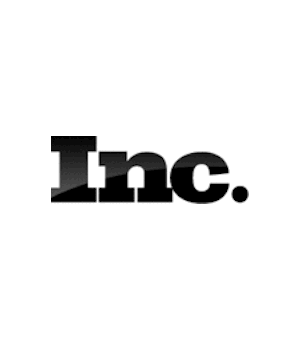
(This post originally appeared on Inc.)
What’s the biggest expense a profitable small business pays each year? Is it payroll? Health insurance? Raw materials? Maybe. But probably not. It’s taxes. That’s because, even in these days of lower rates and a more business-friendly tax environment, your federal, state, and local governments still take an enormous bite out of your profits — as much as 20 to 30 percent in some cases overall.
Frankly, that sucks. And it’s why the smartest business owners I know plan ahead and take their tax bills very seriously. They meet frequently with their accountants and consider the tax impact of their investments and strategic plans. There are only a few weeks left in 2019, so does that mean you’re out of time? Almost. But here are five things you can do to minimize your taxes, assuming you act now.
1 — Buy Capital Equipment
The government wants you to invest in your business, so why not take advantage? Depending on some factors, a typical small business can immediately expense up to $1 million of capital expenditures that are made each year. These expenditures can include a new piece of machinery, a roof, or an HVAC, fire protection, alarm, or security system. Even some types of computer hardware and software can be thrown in. There’s also “bonus” depreciation available for vehicles. Here’s another important thing: You don’t have to pay for it right now! You can finance the equipment while interest rates are low, and still get the full deduction as long as that equipment is placed into service by the end of the year.
2 — Clean Up Accounts Receivable and Inventory
I have some bad news for you. That invoice on your books from A&M Supply that dates back to 2012? Sorry, but they’re not going to pay. In fact, A&M and a good share of those other lousy customers with amounts open more than a few months are likely not going to pay you either. Like most small-business owners, you’re probably an optimistic person who believes that most people are good people and that you should give them a chance. I’ve run a small business for more than 20 years, and here’s what I’ve found: Some customers are just deadbeats. So what do you do? Write those long-outstanding open invoices off your books and take a deduction.
The same goes for that piece of inventory or equipment you bought at that auction back in ’95. It’s still sitting there, isn’t it? It really wasn’t such a “great deal!” was it? That’s OK. You’ve made plenty of good decisions. This just wasn’t one of them. Write that off too.
Clean up your balance sheet. Get rid of those receivables. Dispose of that old inventory and equipment. Take the loss and the deduction, and move on.
3 — Max Out Your Retirement Savings
If you don’t have a 401(k) plan in your company, then quickly get one started. The government gives businesses with fewer than 100 employees a three-year, $500-per-year tax credit for doing so. Then put away as much as you can. As long as you meet discrimination tests, $19,000 is allowed to be saved pre-tax ($25,000 if you’re over 50), so make sure that your employees are saving for their retirement, too. If you’re a smaller business, consider just setting up a simple single employer pension (SEP) plan, where you can put away up to 20 percent of your self-employment earnings tax free with a maximum contribution of $56,000.
It’s not just about your retirement. You want your employees to save for retirement, right? Otherwise, whom are they going to come to with their hand out some day when they realize that they don’t have enough money in the bank to live in their old age? Yeah, you.
4 — Make Repairs to Your Home Office
If you’ve got a home office and you’re deducting your related expenses, then good for you. But it’s possible that you’re not deducting as much as you’re able. Besides the cost of electricity, internet, rent, or other applicable expenses related to the portion of the property you use, you’re also allowed to deduct repairs, maintenance, and renovations. So you can put some money into the property and then use those payments to lower your personal income.
5 — Finally, Pay Your Estimated Taxes, for God’s Sake
Remember those little vouchers that your accountant gave you last year? Remember how you were warned to make sure you take those little vouchers, attach a check to them, and each quarter pay in your federal and state taxes? Let’s hope you did that, because if you didn’t you’re probably going to be facing a big bill that will also include penalties and interest. Too many of my clients think that “estimated” means “negotiable.” Unfortunately, the IRS doesn’t see it that way.
There could be a potential way out of this. Just sit down with your accountant now and go through your 2019 numbers. Maybe your year wasn’t as good as predicted. Maybe something happened that would impact the amount of taxes your accountant estimated would be due. Work the numbers, and if that’s the case you may find yourself owing less in taxes than what was previously thought at the beginning of the year. But you’re not going to know this until you sit down and do the math.
You can take this advice, make these moves, and save some money before the end of the year. Or you can ignore it and just do whatever you’ve been doing. Hey, it’s only 20 to 30 percent of your income, right? No big deal, right?

